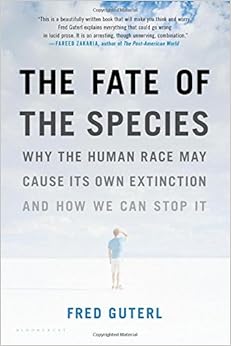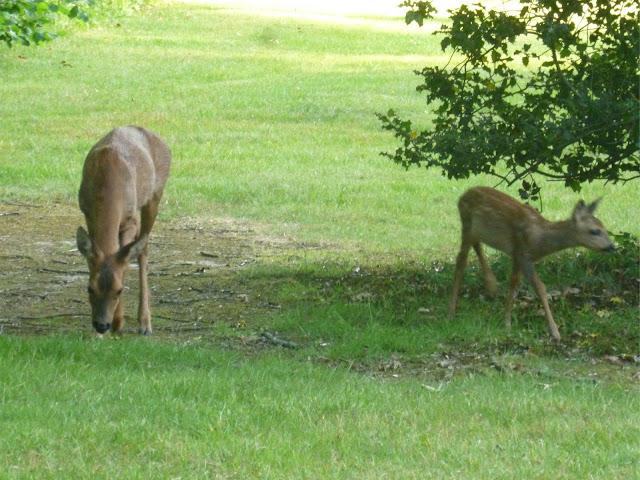I'm a little behind on my blogging but only because I have yet to figure out a way of slowing down/pausing time so that I can fit everything in! I also can't quite believe we have nearly reached the end of June and therefore the end of 30 Days Wild; just four more random acts of wildness left.
On Wednesday, day 24, I was working on commission work again, as I quite often am. As much as I have tried to in the past, I am unable to work outside as I draw my portraits from a tablet and it's just too bright even in the shade for me to see the details I need on the screen. So I more or less spent the day indoors.

Before bed, I caught up on some of the book I've been reading recently called "The Fate of The Species" by Fred Guterl. It's a very thought-provoking read about the state of the planet and the various ways we could be pushing ourselves to extinction. Hypothetical scenarios based on scientific research. I'm certainly finding it interesting but also quite depressing when I consider just what sort of state we are leaving Earth in for future generations. We may not see a mass extinction of our species in this lifetime, or the next, but it's definitely on the cards; it's just a case of what will be the tipping point.
Day 25 was full of surprise encounters involving no planning of mine whatsoever. We had to take a trip into Horsham town centre in search of various items and the car park was busy so we ended up parking on the top storey, open to the elements. Within moments of leaving the car, I noticed a flock of house martins swooping just above us, presumably catching insects. I know they nest in East Street so they weren't too far from home and it was, as always, a lovely treat to see them.
Back at home, after having only seen a handful of butterflies so far this year, a flutter of colour caught my eye through the kitchen window. I ventured out for further investigation to see a meadow brown resting on one of our bushes. The really exciting moment came later in the evening though. By pure chance, I happened to be stood in our front garden, watching a flock of thrushes rattling between the trees through my bins. I focused further out, across the big lawn of the main house, and spotted a roe deer. I watched her for some time as she moved nearer and nearer our garden and after a few moments, I noticed a much smaller deer just behind her: a very young fawn. He seemed full of energy, bounding around after his mother and it made me wonder whether it was his first trip out.
I stayed as still and quiet as I could while simultaneously trying to get a few photos-no easy task! The pair moved even closer to me and I realised they were going to cross right in front of me, mere feet away. I could feel my heart beating harder and I think I might have gasped as the beautiful doe and her fawn clip-clopped slowly and casually across the driveway; the only thing separating them from me was a waist-high hedge. I could see the adult's eyelashes. Now, this might sound utterly ridiculous to some of you, but I'm hoping the rest of you will be able to appreciate how I felt. Any close encounter with a wild animal is special, no matter how boring some might consider them.
I was actually quite pleased that, for once, they didn't catch my scent or see me, and bolt. It was a moment to be savoured.
I spent today in Eastbourne with my mum. We went to see the semi-finals of the Aegon International tennis which was the first time we've seen live tennis and was such a fantastic experience. It didn't stop me noticing the wildlife though. When we stopped to get cash out in Southwater, a flock of swifts were swooping across the square, screaming and twisting around after insects, much like the house martins on Wednesday. Later in the day, during the matches, I saw several house martins doing the same above the court. I'm also fairly certain I saw a peregrine fly past with prey in its talons but it was too tricky to keep one eye on that and the other on the match!
After getting cash, we were travelling on the A272 and a gliding figure caught my eye. The sun caught some pale feathers under the expansive wings and my first thought was buzzard, but the second I saw a forked tail, I knew I was looking at a red kite. It was relatively low too, so I got a good view of it and for a change, I wasn't driving when I saw one!
I do so love the more unexpected sightings of wildlife. It's like nature's way of reminding us that it's still there, no matter where you are or what you're doing.

















































